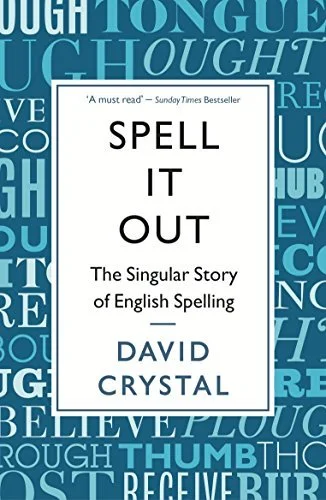Spell It Out
Spell It Out: The Singular Story of English Spelling
by David Crystal
A very readable introduction to the history of English spelling
Many etymology books approach the subject either in a dictionary style, or a haphazard ‘interesting factoid’ style. The chronological approach taken in Spell It Out is far more useful for anyone trying to understand the major influences on English spelling. The author, Professor David Crystal, is one of the foremost linguists in the UK, and he has a talent for communicating engagingly about language.
This book is part of a series of five introductory books by David Crystal about different aspects of language, all of which are informative, engaging and clear.
What it’s about
Crystal begins in the 6th century, as monks attempted to adapt the Roman alphabet to represent the sounds of Anglo-Saxon, and he takes the reader through the influence of the Vikings, the Normans, the printing press, spelling reform and the rise of Latin and Greek, up to the modern day with the standardisation of spelling, loanwords and the effects of the internet.
Each chronological stage is used to explain a facet of English spelling that might otherwise seem random. For example, why is there a letter <h> in ghost? Because a lack of English typesetters at the dawn of the printing press led to Flemish typesetters working on English books, and they imported their native <gh> from gheest. Why is there <b> in debt? Because 16th century spelling reformers felt that spellings should reflect their Latin origins (in this case, the Latin root debitum).
The last section, ‘A Teacher’s Appendix’, briefly explains that spelling should not be taught as words to be learned in isolation. Instead, words should be embedded in a sentence context, or in the context of related words, or accompanied by an explanation of the error and a way to remember the correct spelling.
Who is it for?
Spell It Out is an easy-to-understand introduction to the history of English spelling, particularly suitable for beginners, but an enjoyable read for those with a literacy or linguistics background too.
The appendix is the only section explicitly written for teachers, so this is definitely not a handbook for how to teach etymology. However, it is a fantastic starting point for learning about spelling. If you believe (as I do) that effective teaching of spelling requires teachers to understand why words are spelled as they are, this is a great book for developing teacher expertise.
If you want to follow up with a more in-depth look at etymology, David Crystal’s Stories of English is much more detailed (see the review here) and The History of English podcast is incredibly informative (reviewed here).

